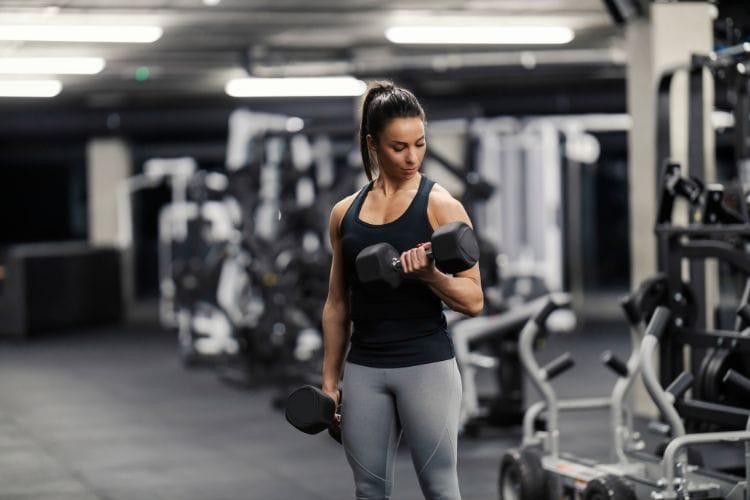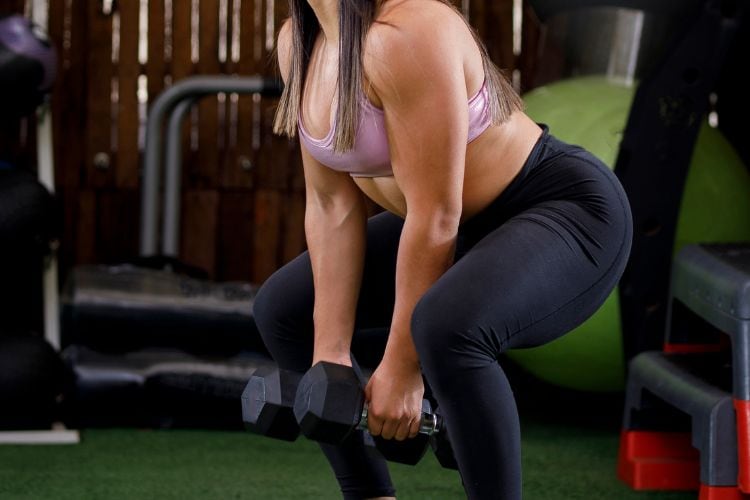Sign up for workout ideas, training advice, reviews of the latest gear and more.






A 45-minute full body dumbbell workout is one of the most efficient ways to boost strength, build muscle, torch calories, and improve overall fitness without needing a full gym. Whether you’re training at home or in a gym environment, dumbbells allow you to hit every major muscle group using powerful compound exercises, metabolic conditioning, and targeted isolation movements—all in a single session. This balanced approach is ideal for women who want to get stronger, tone their bodies, and feel more confident while maximizing results in limited time. In this article, you’ll find a complete 45-minute dumbbell workout routine, a structured training plan, proper technique tips, and guidance on how to scale the intensity for all fitness levels.
A 45-minute session is the perfect duration to combine strength training, hypertrophy work, conditioning, and controlled rest periods. It’s long enough to challenge all major muscle groups, but short enough to maintain intensity without overtraining. With dumbbells, you activate stabilizer muscles, improve functional strength, and burn more calories because each arm works independently. This increases neuromuscular demand, improves balance and coordination, and enhances muscle symmetry. For women seeking fat loss, improved definition, and greater strength, dumbbell workouts rank among the most effective training methods.
This training style also supports metabolic conditioning. When compound lifts such as squats, rows, and presses are paired with moderate rest, your body experiences an elevated heart rate similar to cardio—while simultaneously building strength. This creates a strong afterburn effect (EPOC), meaning you continue burning calories long after your workout ends.
Dumbbells challenge your muscles through a full range of motion, allowing deeper engagement and greater time-under-tension compared to machines. This results in better muscle activation, helping sculpt the arms, back, glutes, core, and legs simultaneously.
Full body training elevates your heart rate and maximizes calorie burn. The more muscle groups you work at once, the more energy your body uses during and after the workout.
A full body routine eliminates the need for split workouts and can be completed in less than an hour. With smart exercise sequencing, you’re able to train strength, endurance, and mobility together.
Because dumbbell exercises require balance and coordination, they strengthen your core naturally. This results in better posture, better movement quality, and enhanced athletic performance.
All you need is a pair of dumbbells (or an adjustable set). No machines, no gym membership, no complicated setup—just effective strength training with minimal equipment.
This routine follows a strategic format designed to maximize total body engagement:
Each section has a purpose—warming up your muscles, building strength, boosting conditioning, tightening your core, and promoting recovery at the end.
Below is the complete routine. Choose dumbbells that are challenging but allow you to maintain correct form. Most women use 8–25 lb dumbbells depending on experience level.
Perform each exercise for 45 seconds with 15 seconds transition:
Loosens shoulder joints and prepares your upper body for pushing and pulling movements.
Activates quads, glutes, and hips.
Warms posterior chain and reinforces proper hip hinge mechanics for deadlifts.
Warms up the spine, core, and back muscles.
Perform each superset for 3 rounds. Work for 40 seconds each exercise with 20 seconds rest.
A powerful move that engages the quads, glutes, core, shoulders, and triceps. Start with dumbbells at shoulder height, squat deep, and press overhead as you stand.
Strengthens glutes, hamstrings, and stabilizers while reinforcing balance and unilateral strength.
Rest 60 seconds before repeating.
Targets the back, rear shoulders, and biceps. Keep your core tight, chest lifted, and elbows close to your ribs.
A staple for hamstrings and glutes. Push hips back, keep dumbbells close to your shins, and engage your posterior chain.
Rest 60 seconds before repeating.
Perfect for working chest, triceps, and shoulders without needing a bench. Lower dumbbells slowly to emphasize tension.
Hold a plank, drag the dumbbell across your body from left to right. This enhances core stability and anti-rotation strength.
Rest 60 seconds before repeating.
Perform 4 exercises back-to-back for 45 seconds each, rest 30 seconds, and repeat 3 rounds.
A deep squat variation that activates the glutes, core, and legs while keeping your spine supported.
An explosive full body movement that builds power, strengthens shoulders, and boosts heart rate.
Targets core, back, and arms while improving stability. Move slow and controlled.
A hybrid movement that trains posterior chain, shoulders, and traps while keeping metabolism elevated.
This portion of the workout combines strength and speed to improve conditioning and maximize fat burn.
Perform each movement for 45 seconds with 15 seconds rest.
Targets obliques and rotational strength.
Engages deep core stabilizers while reinforcing proper spine alignment.
Strengthens the glutes and lower back while tightening the core and hip flexors.
A great finishing movement for full abdominal engagement.
Release tension in the thighs.
Lengthens hamstrings and lower back.
Improves posture and releases chest tightness.
Helps the nervous system shift into recovery mode.
Choosing the correct dumbbell weight is essential for maximizing results and preventing injury. The ideal weight should feel challenging for the last 3–4 reps but not compromise your form.
Beginners: 5–10 lbs
Intermediate: 10–20 lbs
Advanced: 20–35 lbs+
If you cannot complete the full time interval, reduce the weight. If you complete the interval easily, increase weight slightly.
Controlled, slow movements increase muscle activation and reduce risk of injury.
To maintain intensity, follow the structured times closely.
Eat a balanced meal with protein and carbs 1–2 hours before training. Afterward, prioritize protein for recovery.
Increase weights or add extra reps/time when the workout feels too easy.
This frequency allows for strength development, fat loss, and full body conditioning without overtraining.
Here is a simple schedule you can follow:
This structure promotes balanced recovery, muscle development, and sustainable fat loss.
This routine is ideal for:
If you prefer short sessions, longer routines, or advanced strength programming, this workout can be easily modified to match your individual goals.
A 45-minute full body dumbbell workout is one of the most effective ways to build strength, burn calories, and improve your overall fitness without complicated equipment or long training sessions. This routine balances compound lifts, metabolic conditioning, core training, and functional strength work to ensure you get a complete, efficient, and challenging workout. Whether your goal is fat loss, muscle toning, or improved energy, consistent dumbbell training will help you achieve the strong, lean physique you want.
Ready to maximize your training time with a full-body dumbbell routine? Our 45-minute full body dumbbell workout pairs perfectly with several of our companion workouts and guides. After finishing this session, check out our 30-Minute Full Body Dumbbell Workout Plan for a faster yet efficient alternative. For a quick at-home option, explore The 10-Minute Full Body Dumbbell Workout for a Busy Life. Want to focus just on legs? Try the 45-Minute Leg Day Workout for Serious Strength and Growth. To enhance recovery and mobility on off-days, browse our “Health” section or jump into our guide on How to Stay Consistent with Your Diet: 15 Proven Tips for Success. Finally, if you ever want to switch up your format, our 45-Minute Full Body EMOM Workout: Ultimate Strength & Cardio is a great complementary session. Tackle the dumbbell workout today, then use these linked workouts and resources to build a comprehensive and sustainable training plan.
Stay up to date on the latest women’s health, fitness and lifestyle trends and tips.